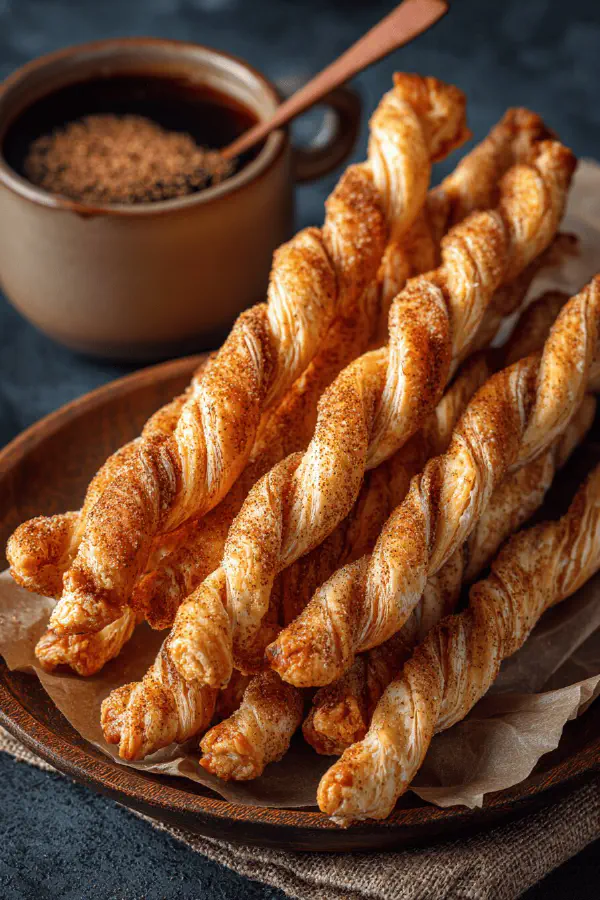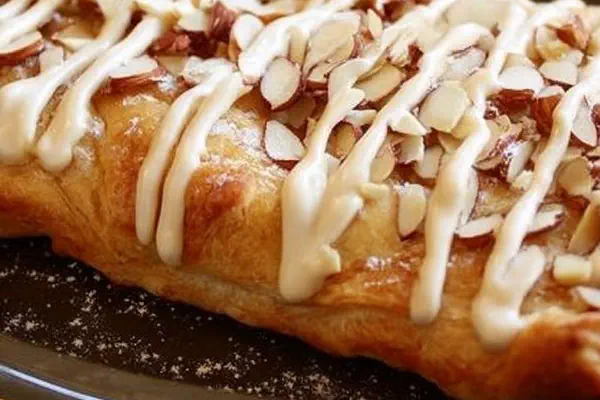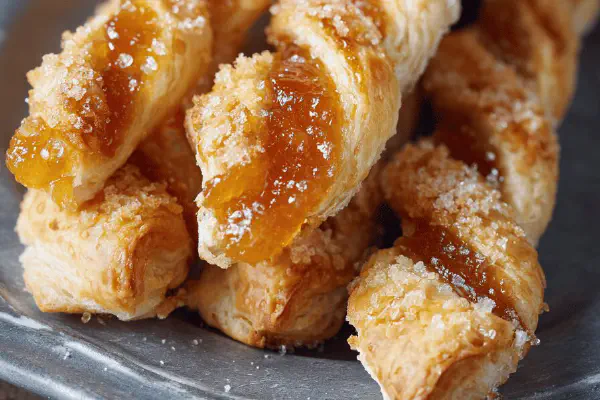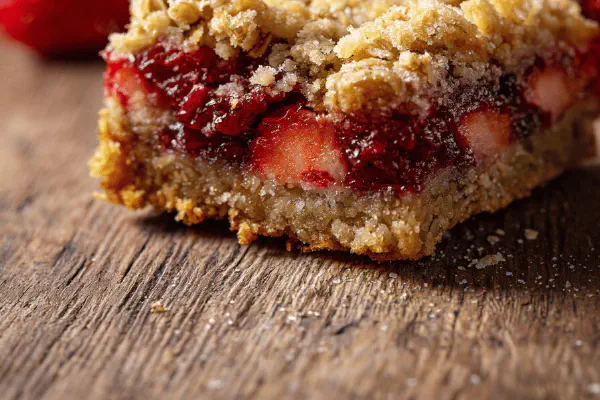Featured Recipe
Cinnamon Twisted Pastry Sticks

By Kate
"
Crisp twisted sticks from buttery puff pastry infused with cinnamon sugar, baked until golden and flaky. Quick hands and a sharp blade. Dairy-free milk swap suggested, plus exciting nutmeg addition for a spicy lift. About 40 sticks per batch, great crowd pleaser or snack with tea.
"
Prep:
12 min
Cook:
11 min
Total:
23 min
Serves:
40 sticks
dessert
snack
pastry
baking
cinnamon
Introduction
Twisted pastry sticks. Think flaky, cinnamon-kissed crunch layered with hint nutmeg, subtle sweetness. No fuss, no frills. Puff pastry ready-made saves hours. Twist for texture, bite for snap. Avoid soggy mess. Target crisp, golden finish. Your kitchen will smell like warm spice market, sugar caramelizing gently. Simple tweak: swap cow’s milk with almond or oat milk—keeps dairy allergy off the table without losing the golden glaze sheen. Slicing technique matters; uneven strips bake unevenly, so precision counts. Bake near top rack for better browning if convection oven’s on. Serve warmish, not hot. Cold dulls texture; too hot softens. This snack pairs with black tea or espresso, no sugar added. Crunch. Sigh. Repeat. Great for impromptu guests or late-night munch.
Ingredients
About the ingredients
Puff pastry quality varies—choose block, not sheet, for better structure. Thaw fully but keep chilled until ready; warm dough is sticky, tears when rolling. Flour work surface lightly to prevent sticking; too much flour dries edges. Milk optional but crucial for even spice adhesion and color development. Nutmeg adds complexity but use sparingly—intense and can overpower cinnamon. Sugar type impacts texture; turbinado gives slight crunch difference versus fine granulated. Replace sugar with date sugar for whole-foods approach, though texture alters. Twisting technique traps air, creates flaky layers but over-twist tears dough causing leakages. Fresh cinnamon matters; stale powder dulls flavor.
Method
Technique Tips
Start with preheated oven. Cold pastry won’t rise well. Roll gently for even thickness; variable thickness means uneven bake—thin parts burn, thick stay raw inside. Cut strips uniformly; ragged edges reduce crispness. Brushing milk sparingly maximizes glaze without sogginess—use a pastry brush and dab excess off. Sprinkle spice sugar while milk wet, so it sticks, then turn over to coat both sides—better caramelization and flavor. Twisting is functional and aesthetic; gives character and prevents strips from flattening during bake. Space on pan is non-negotiable; overcrowding traps steam and softens pastry. Listen during baking: crackle means layers puffing; silence means under-bake; harsh dark color means burnt butter. Remove when golden, not brown to avoid bitter notes. Cool completely on wire rack—avoids moisture on bottom and keeps crispness. Storage airtight, at room temp only; refrigeration ruins the crunch. Reheat briefly in hot oven if soft before serving.
Chef's Notes
- 💡 Use high-quality puff pastry blocks. Keeps structure better. Thin, even strips are crucial; they bake uniformly. Cool work surface helps too.
- 💡 Brush lightly with plant-based milk—crucial for the right texture. Too much makes them soggy. Just enough for sugar to stick. Sprinkle while wet.
- 💡 Keep an eye on the oven sounds. Listen for crackling—good sign of puffing layers. If silent, check for undercooking.
- 💡 Spacing matters; one cm apart is key. Overcrowding softens texture drastically. Bake close to the top for better browning if your oven allows.
- 💡 Tweak cinnamon and nutmeg ratios to your taste. Fresh spices make a big difference. Stale spices dull flavor; check your pantry.
Kitchen Wisdom
How to avoid sogginess?
Allow cooling on rack; moisture traps underneath. Ensure baking sheet isn't too crowded. Thin strips fry better.
What if strips burn?
Keep an eye on oven. Color matters; golden, not brown. Adjust rack positioning for even heating.
Can I use frozen pastry?
Yes, if thawed properly. Warm dough won’t rise well, also sticky when rolling out. Ensure nice layers.
What are storage options?
Airtight container works well at room temp. Avoid fridge; it ruins crispness. Brief oven warming revives crunch.



